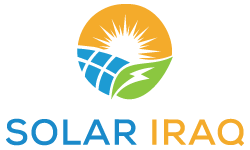Utility-scale PV power plants (also known as solar farms, solar parks or solar power plants) are large solar electric systems that generate electricity and feed it into the national electric grid. Such plants can take up large areas of land. Like conventional power plants, they are connected to medium or high-voltage transmission networks.
Solar power plants range in size from several MW to several hundred MW. Some are over 1,000 MW.
Configuration of a solar power plant using smaller ‘string’ inverters to convert the DC electricity from the PV modules to AC electricity for the electric grid. These types of inverters are also used in residential, commercial, and industrial systems which are connected to the low-voltage grid. The transformer steps up the relatively low voltage produced by the inverters to the higher voltages required by the grid.

Configuration of a solar power plant using a large central inverter. This type of inverter is especially designed for use in solar power plants. At very large solar power plants, several central inverters can be used.
The electricity produced is usually sold directly to an electric power utility via a power purchase agreement (PPA), a legal contract defining pricing and conditions of sale.
Solar power plants can also operate in conjunction with other power sources, such as a gas turbine plant. When solar energy is not available, for example at night, the gas turbine plant can be brought online to make up for the deficit. Some solar power plants also have electricity storage facilities.
